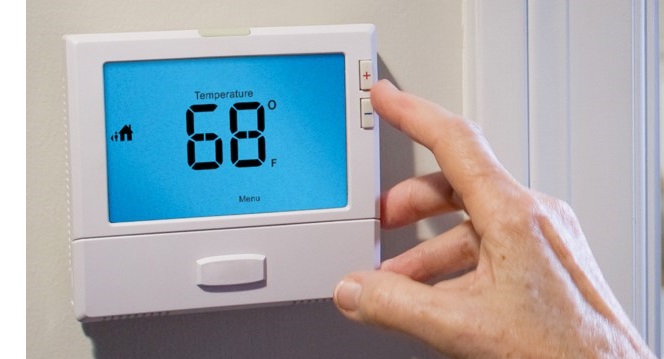A Deeper Dive into Your Thermostat

Our bodies are exceptionally good at regulating our personal temperatures. When it comes to regulating our home’s temperature, we call on the often-unsung thermostat. In MA and CT, with the four-season climate we experience, we often rely on our heating and cooling systems to keep the indoors comfortable. Most of us are familiar with how a thermostat can control our HVAC system, but do you know how it works?
The Basic Operation of a Thermostat
Thermostats are mechanical or electronic switches that automatically open or close a circuit as the room’s temperature changes. When room temperature is below the established setting, the thermostat opens the circuit to start the burner and/or circulator or blower of the HVAC system. When the desired temperature has been reached, the thermostat closes the circuit.
How Thermostats Prevent Short Cycling
To prevent short cycling, thermostats use temperature hysteresis, which refers to the difference between the system’s activation and deactivation points. There is a “buffer zone” of how much the temperature can change before the system turns on or off. This keeps the HVAC system from rapidly turning on and off whenever there is a slight change in temperature. While rapid cycling can cause system parts to where down quickly, the broader the range between temperature activation points, the more energy you can save.
Traditional Thermostats
Traditional thermostats use a bimetallic, or bimetal, strip. This strip consists of two different metals that are bonded together and expand or contract at varying rates of speed when the temperature changes. By bending or moving when heat is added or taken away, it creates a mechanical force that opens or closes a circuit.
Programmable Thermostats
Programmable electronic thermostats use digital sensors to read room temperatures, leading to greater accuracy and responsiveness. The beauty of programmable thermostats is that they can be programmed to achieve different temperatures according to a predetermined schedule. They come in 7-day models, ideal for those who have a different schedule every day; 5+2-day models, for those who have a set weekday and weekend schedule; and even 5-1-1 models, for those who have a Monday-Friday schedule, and unique Saturday and Sunday schedules.
Smart Thermostats
Smart thermostats have taken this technology to new heights, enabling you to adjust the temperature in your home from anywhere at any time using a mobile device. Some “learning” thermostats even study factors like your energy usage and the weather and use that information to adjust the temperature for maximum efficiency.
Related Post: Avoid Teeth-Chattering Temperatures with These Home Heating Tips
Get a Thermostat Consultation from PayLessforOil.com
Thermostats have come a long way, and many great options exist if you’re looking to upgrade yours. Be sure to consult PayLessforOil.com when considering your next thermostat. The right thermostat settings can help you save on your fuel costs.








